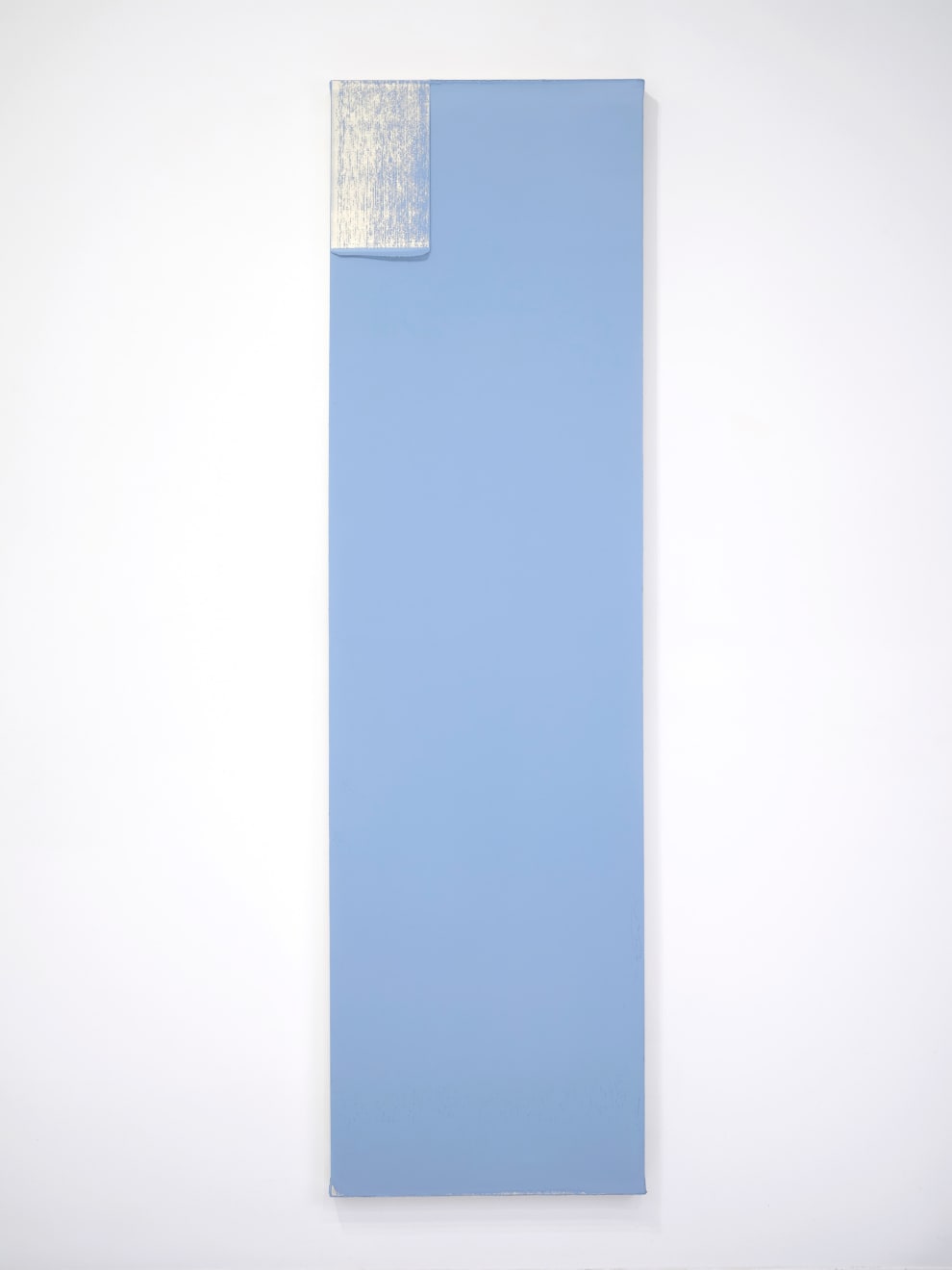GJ Kimsunken
Figuration 22. 17, 2022
Oil on canvas
71 x 19 1/2 in
180 x 50 cm
180 x 50 cm
GK0059
Copyright The Artist
Further images
In his work, Kimsunken asks questions about human existence: who are we, why are we and what are we for? Generally, he titles each work Figuration. Kimsunken methodically primes the...
In his work, Kimsunken asks questions about human existence: who are we, why are we and what are we for? Generally, he titles each work Figuration. Kimsunken methodically primes the canvas with gesso, which he then covers in multiple layers of oil paint, giving the surfaces an otherworldly luminescence, as well as substantial weight. Despite his compositions’ reductive, abstract appearance – achieved by scraping away paint from the canvas – Kimsunken’s paintings represent the human figure.To the artist, this method is very much the most direct way of mark-making and is related to the core theme of his work - arousing the human condition - leading to the question of human salvation.
Kimsunken’s non-descriptive figure paintings occupy a singular space between representation and abstraction. His repetitive and rigorous painting process emphasizes the physical properties of oil paint, with the resultant works deeply rooted in the history of the medium.
Absence and presence are equally important – absence makes presence possible and presence exists through absence. The two states of being are inseparable. The painting is the same height as the artist himself – seventy-one inches. Here, Kimsunken makes direct reference to the concept of absence by using an exaggerated, elongated format, cropping out a large part of the canvas and giving it an almost sculptural presence off the wall. In the artist’s own words, “My work seems to question the meaning of presence through the concept of absence.” Kimsunken wants viewers to stand next to a painting and feel the presence of a figure. The elongated, upright format isolates the essential image from the larger compositional structure and accentuates the human figure through articulation of the head.
Kimsunken’s non-descriptive figure paintings occupy a singular space between representation and abstraction. His repetitive and rigorous painting process emphasizes the physical properties of oil paint, with the resultant works deeply rooted in the history of the medium.
Absence and presence are equally important – absence makes presence possible and presence exists through absence. The two states of being are inseparable. The painting is the same height as the artist himself – seventy-one inches. Here, Kimsunken makes direct reference to the concept of absence by using an exaggerated, elongated format, cropping out a large part of the canvas and giving it an almost sculptural presence off the wall. In the artist’s own words, “My work seems to question the meaning of presence through the concept of absence.” Kimsunken wants viewers to stand next to a painting and feel the presence of a figure. The elongated, upright format isolates the essential image from the larger compositional structure and accentuates the human figure through articulation of the head.











